Pinhole Posted On 16th May 2023 To Magazine, Pinhole & Stories

Why pinhole photography?
This is a question I’m often asked, by fellow photographers and complete strangers alike. Using a beautiful wooden Ondu camera, I began exploring the world of slow photography about five years ago. The moment I saw my first developed negatives I knew I’d found a glimpse of photographic heaven. This started my obsession with this ancient form of imaging. As you’ll see, my love of this medium has many facets – the creative possibilities, the look and even the image making process itself.
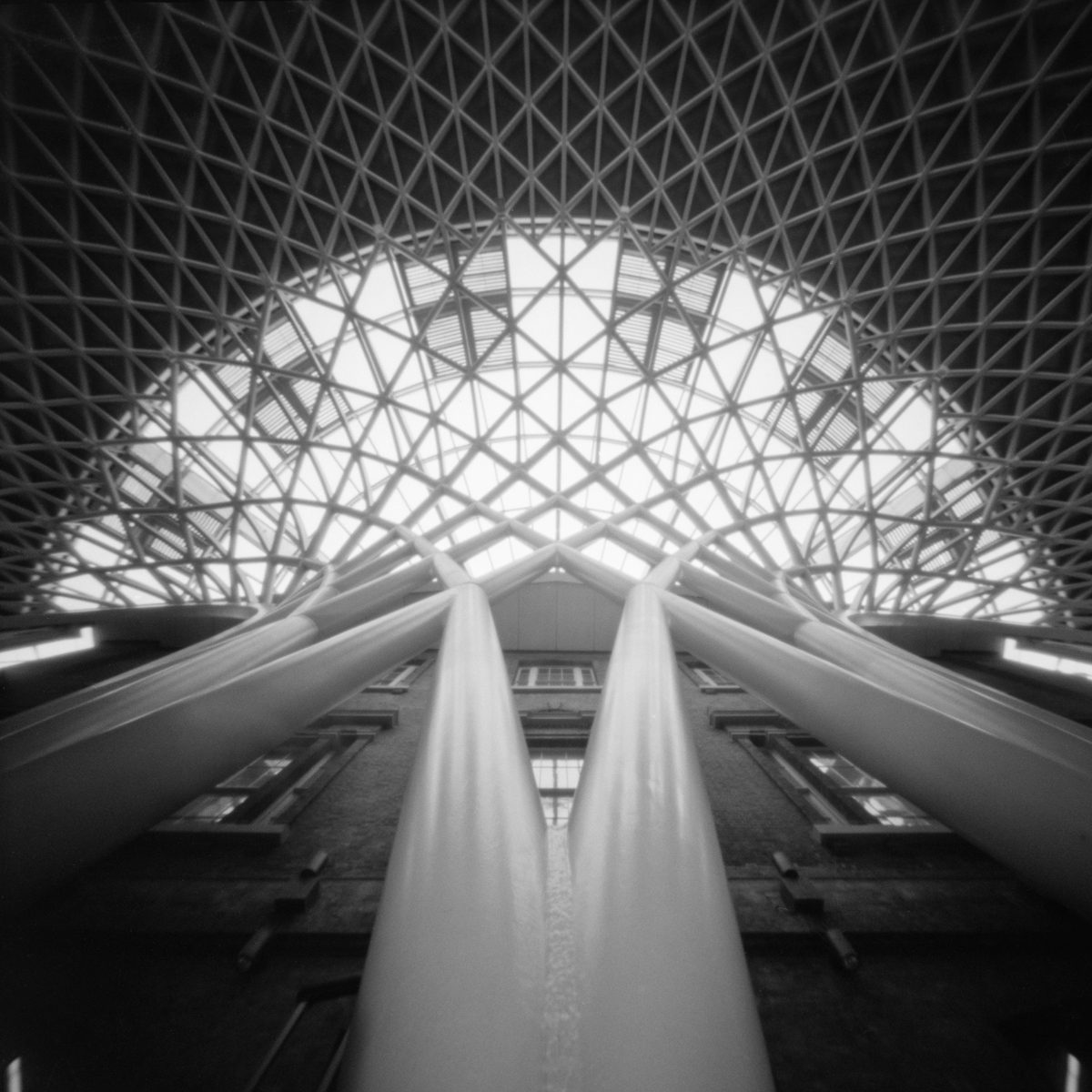
Reaching toward the sky - ILFORD FP4+
The pinhole ‘look’
Pinhole images may lack absolute sharpness. However, it never fails to amaze me just how much detail can be captured using such a simple technique. They have a dreamy feel which uses the light in a unique way. Areas of over-exposure take on an ethereal glow and shooting into the light sometimes results in extraordinary fields of flare.
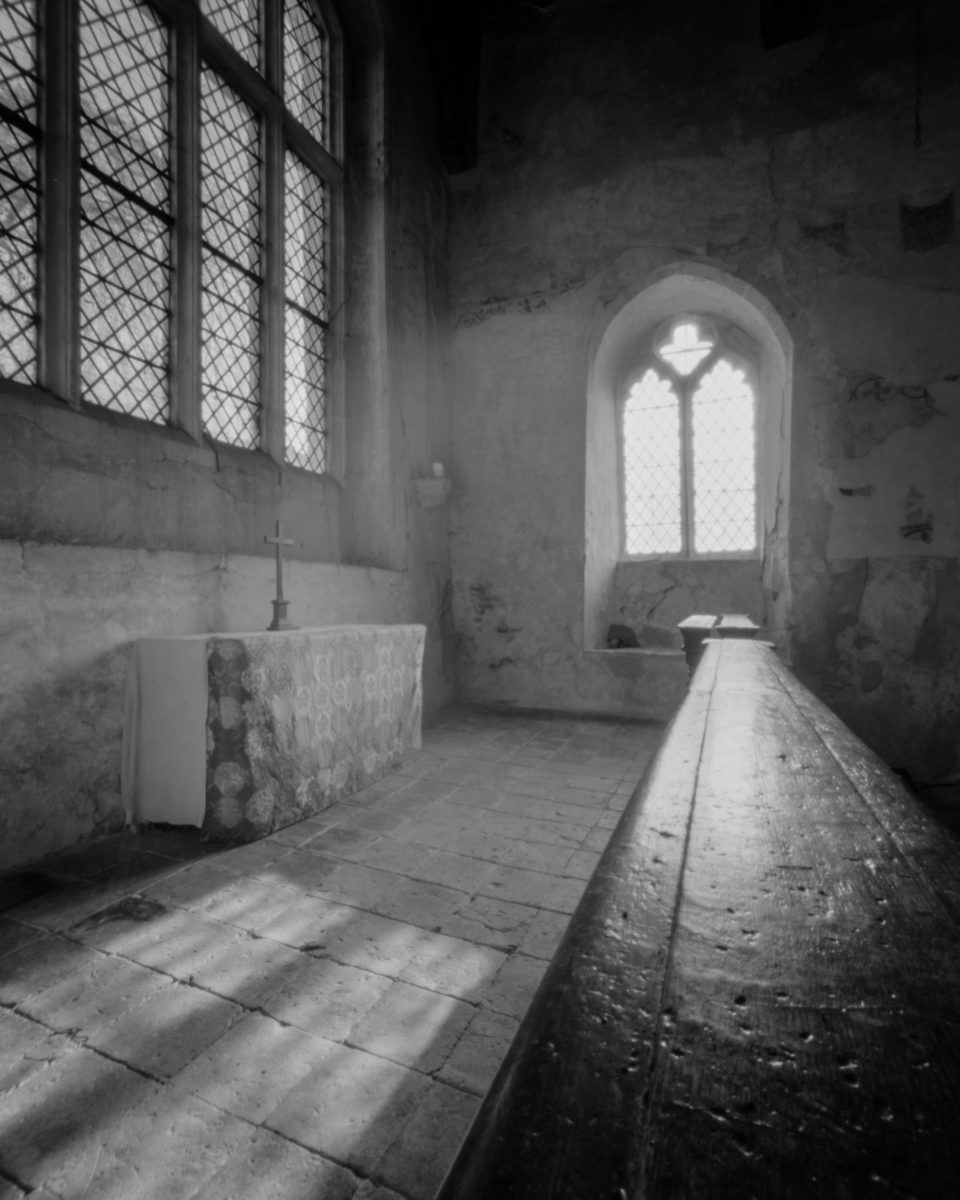
Into the light - DELTA 100
Shooting with an aperture of f125 allows me to capture chunks of time on film rather than fleeting moments. You might assume static subjects would be best suited to this medium, but I often seek to include motion in my photos. Moving water is a perennial favourite, but I look for images in less obvious places too, such as historic motor racing events.
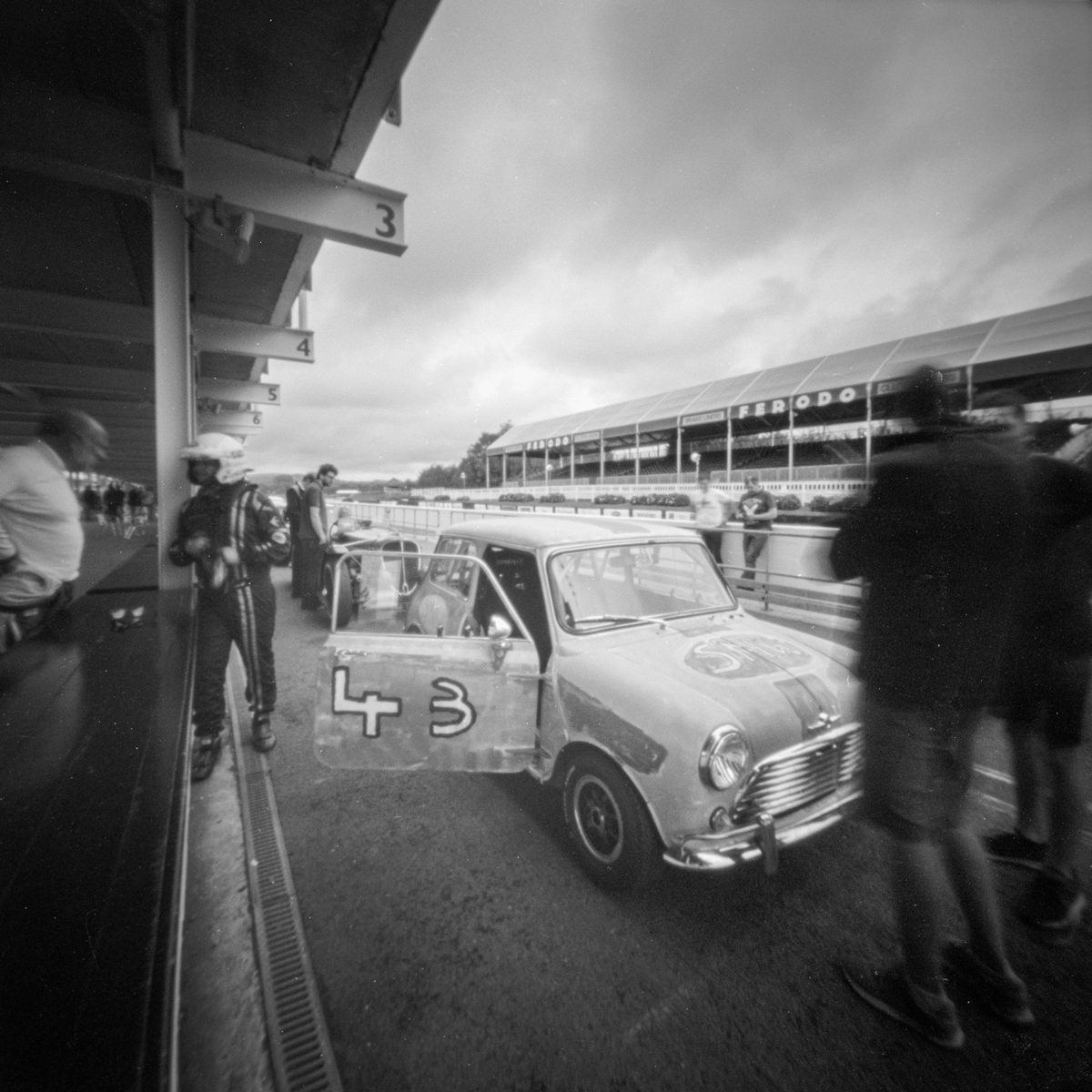
Race Preparations - ILFORD FP4+
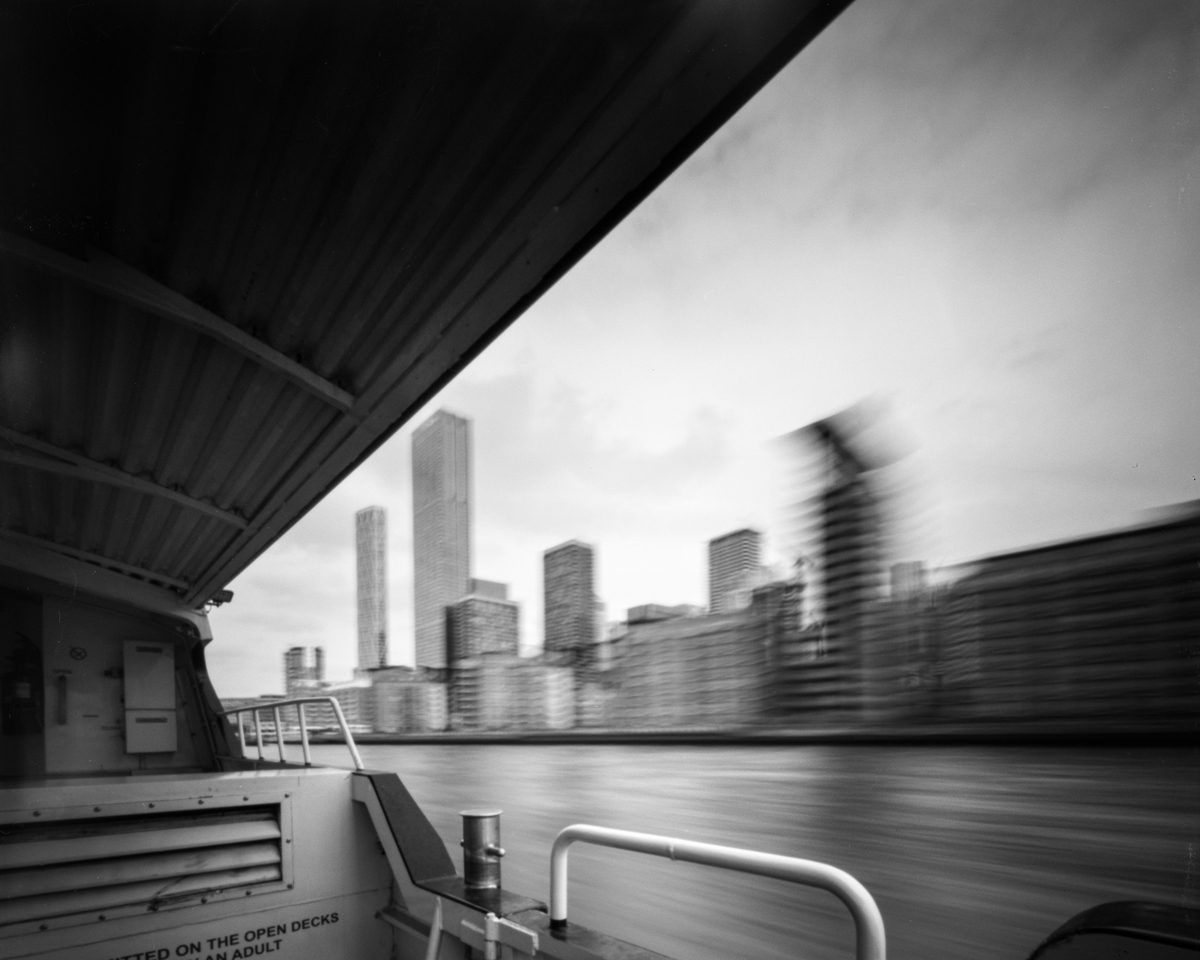
Speeding past Canary Wharf - DELTA 100
Enjoying the slow life
I have a busy working life as a freelance musician, travelling all over the country for rehearsals, workshops and concerts. There’s always a camera in my bag and I love documenting the sights I see around me. The process of pinhole photography is by its nature leisurely. This enforced slowness is a great antidote to the stress of travel and performing. Spending time with my camera takes me to a quiet zone where I can observe the world and take pleasure in looking for images. The process of experimenting and learning perpetually inspires me to try new things.
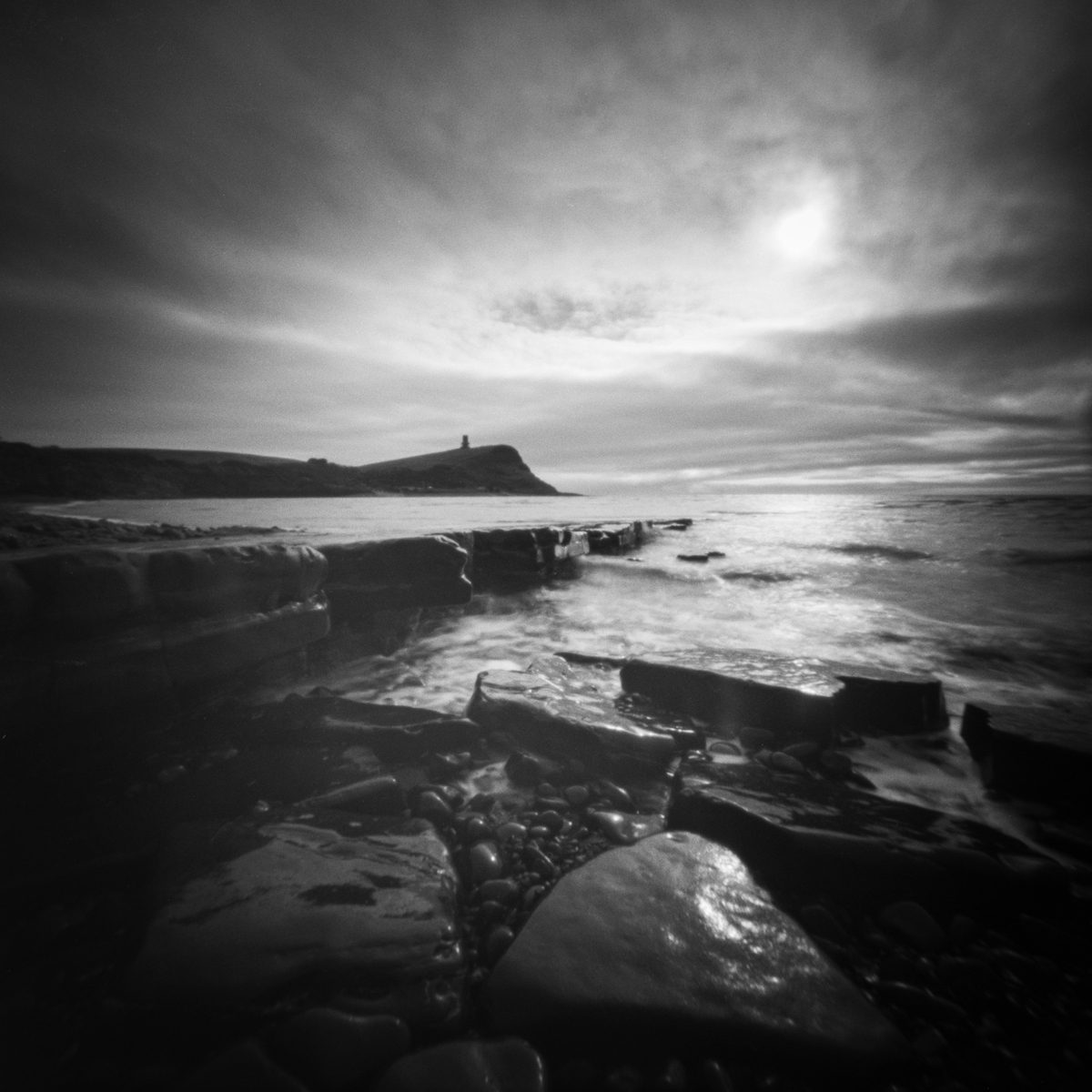
Kimmeridge Bay and the Clavell Tower - ILFORD FP4+
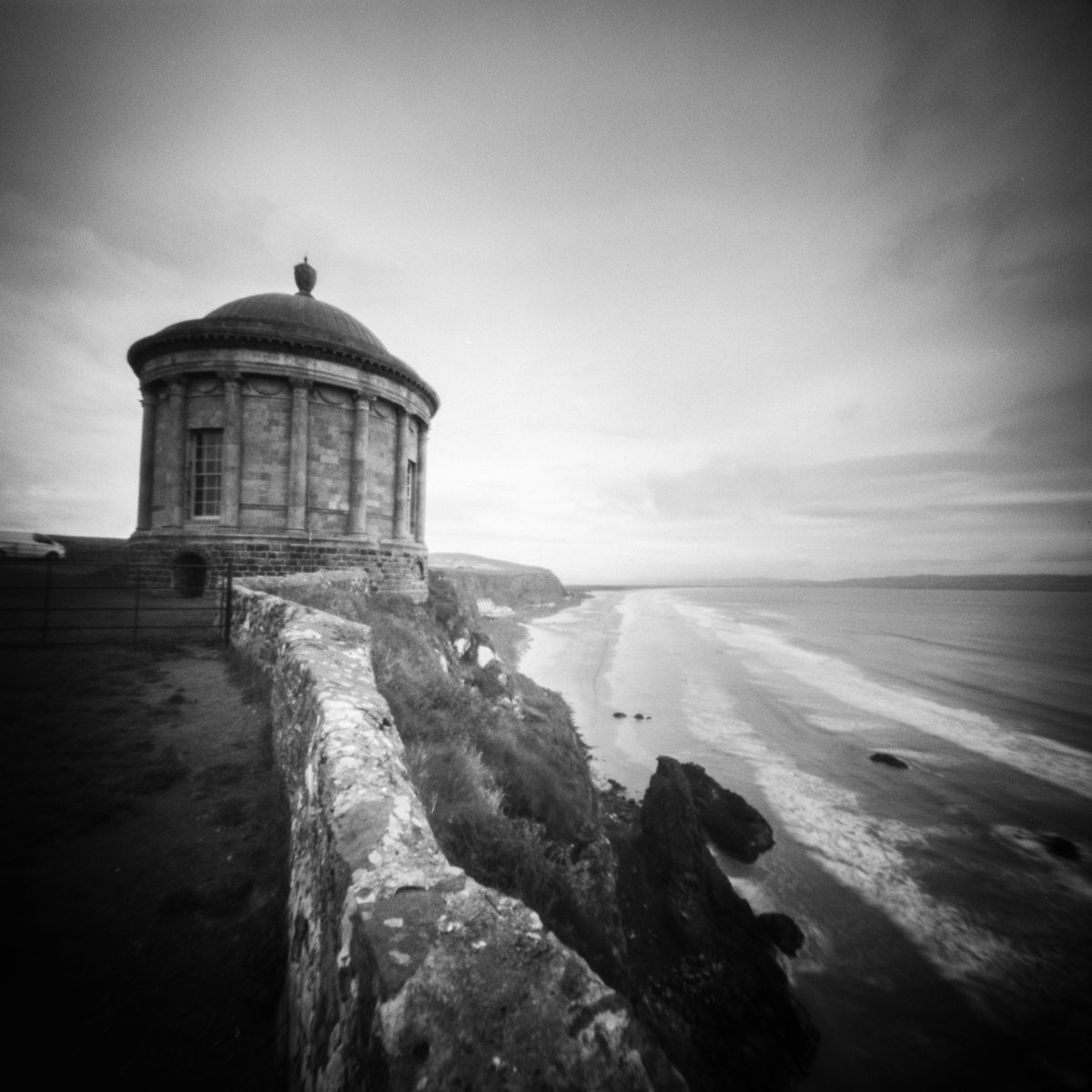
Teetering on the edge - Mussenden Temple, Northern Ireland - ILFORD FP4+
Choosing one’s tools
I use a selection of Ondu pinhole cameras, lovingly crafted from ash and walnut in Slovenia by Elvis Halilovic. The tactile experience of working with a wooden camera is a joy and the clever engineering and design work put into them makes winding the film and opening the shutter seamlessly easy. With pinhole photography the size of your negative directly affects the detail and (relative) sharpness of the finished images so I prefer to use the larger 120 and 4x5 film formats.
My favourite film has to be ILFORD FP4+. I just love the quality it brings to my photos and I’m patient enough to wait several minutes if that’s what the exposure demands. Sometimes waiting just isn’t an option though. My patience can wear thin if I’m going to be stuck somewhere minding my camera for a couple of hours while it takes a photo! On these occasions Delta 3200 is a godsend. The first time I used it I was prepared for a grainy mess, but the results defied my expectations. In dark churches it brings a magic to my photos and makes dramatic architectural images possible, like this one. Like this one of the beautiful font and reflections at Salisbury Cathedral.
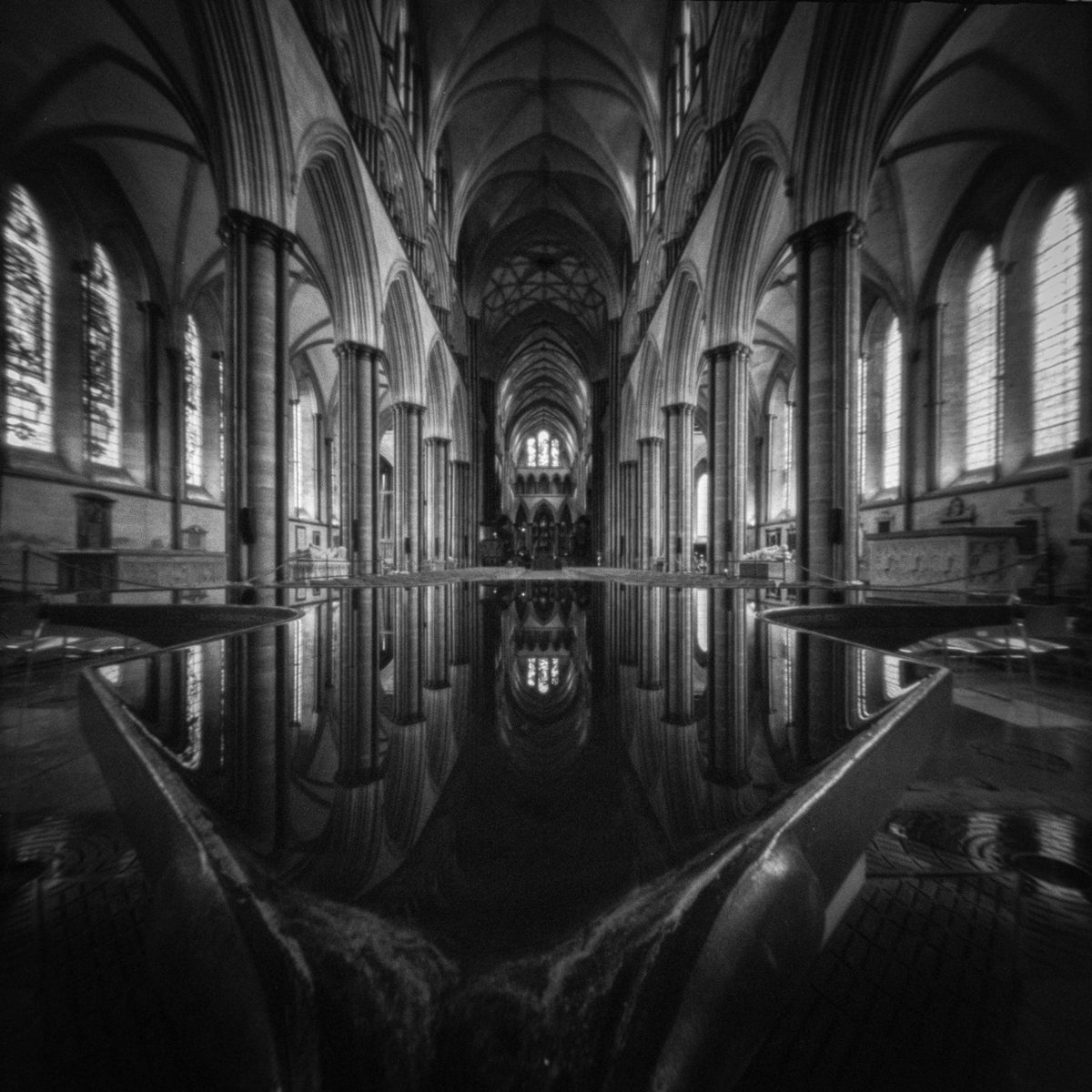
Reflections of Salisbury Cathedral - DELTA 3200
The human element
People aren’t an obvious subject for a slow medium like pinhole. When exploring cities, I often include a human element in my frame to bring a sense of movement to the scene. Long exposure portraits become very ethereal, but the motion just serves as a reminder of the passage of time.
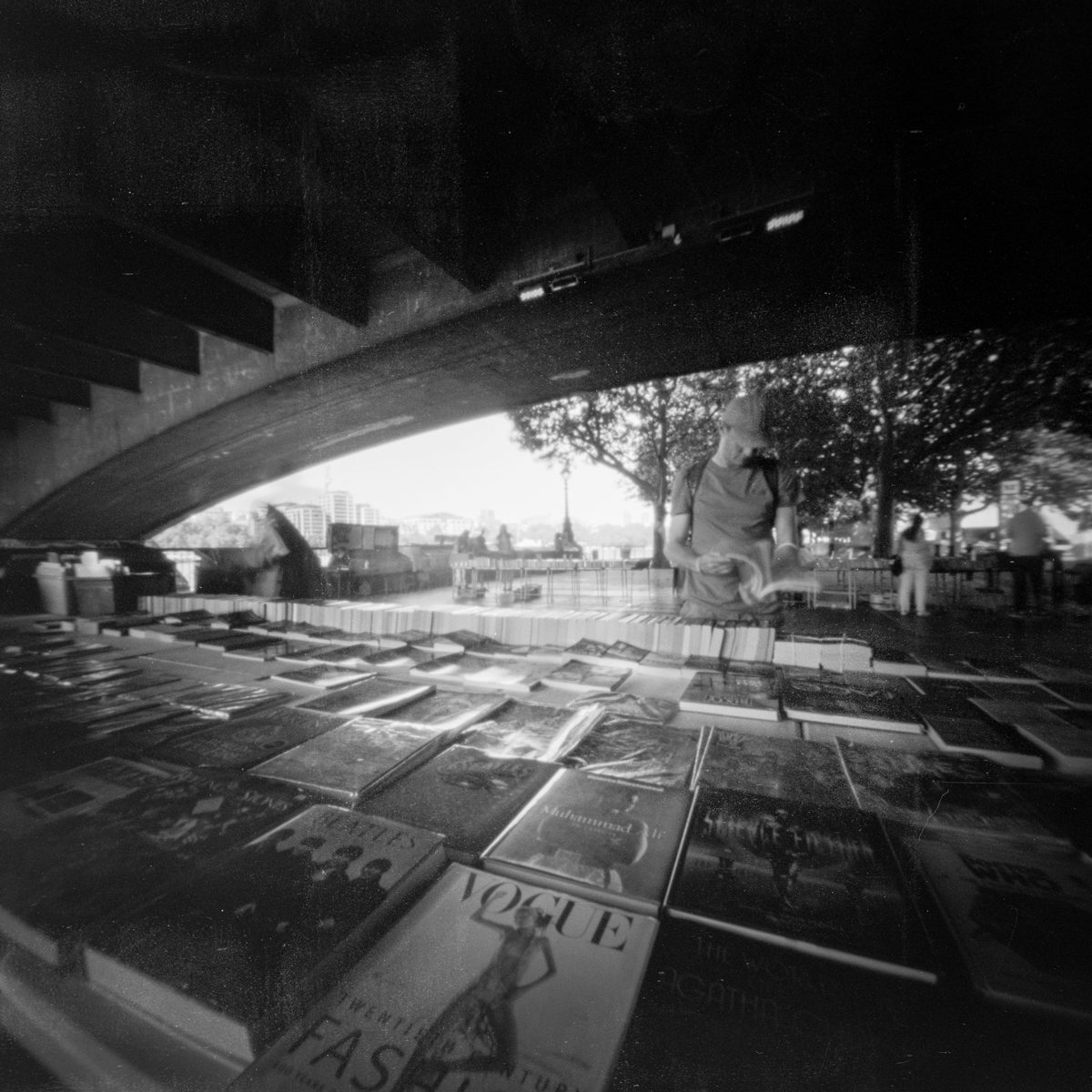
Browsing for books beneath Waterloo Bridge - ILFORD FP4+
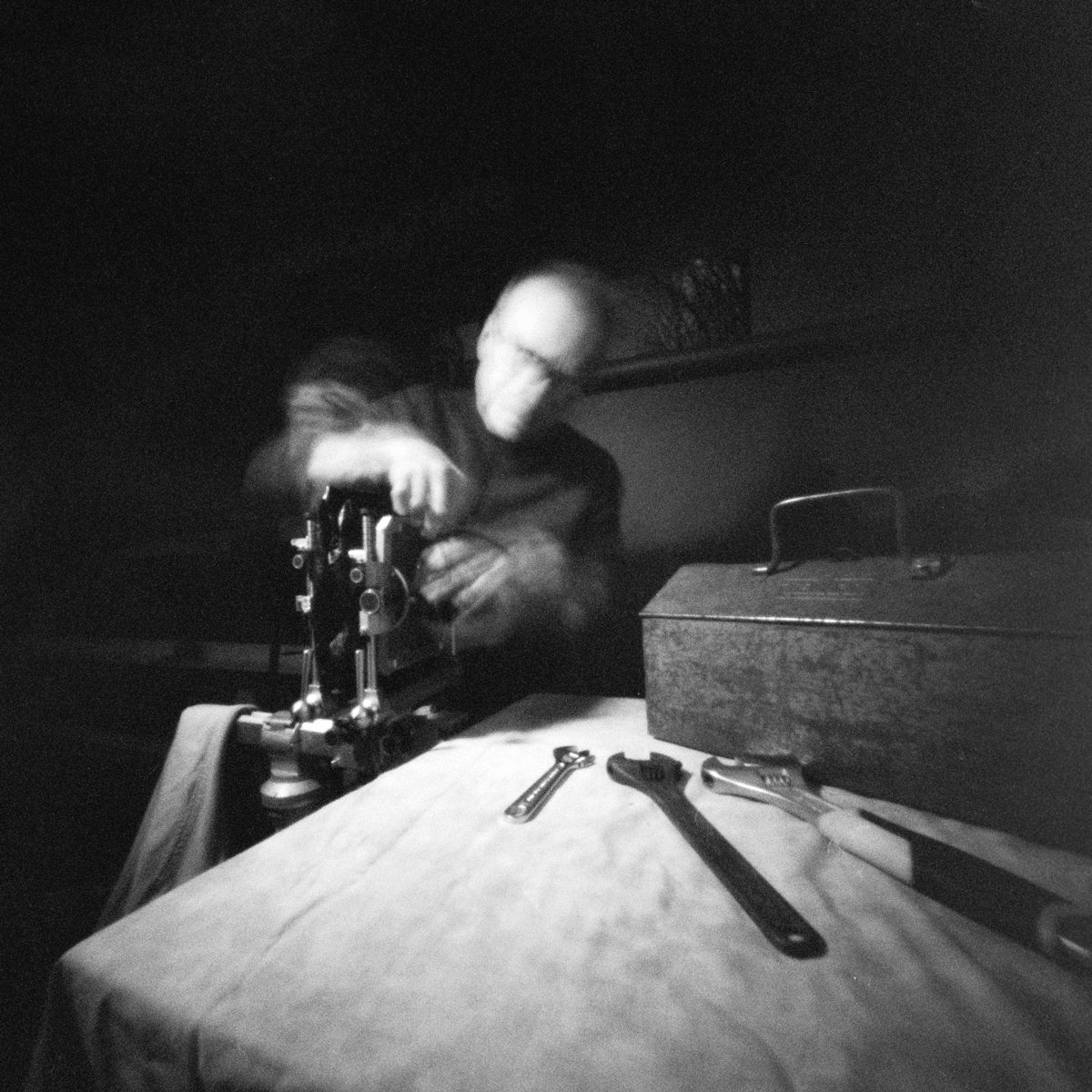
The photographer - DELTA 3200
One of my ongoing projects is a series of photos where I include myself in the frame. I love exploring ancient churches and the extended exposure times allow me an opportunity to be part of the image, albeit often in a ghostly form.
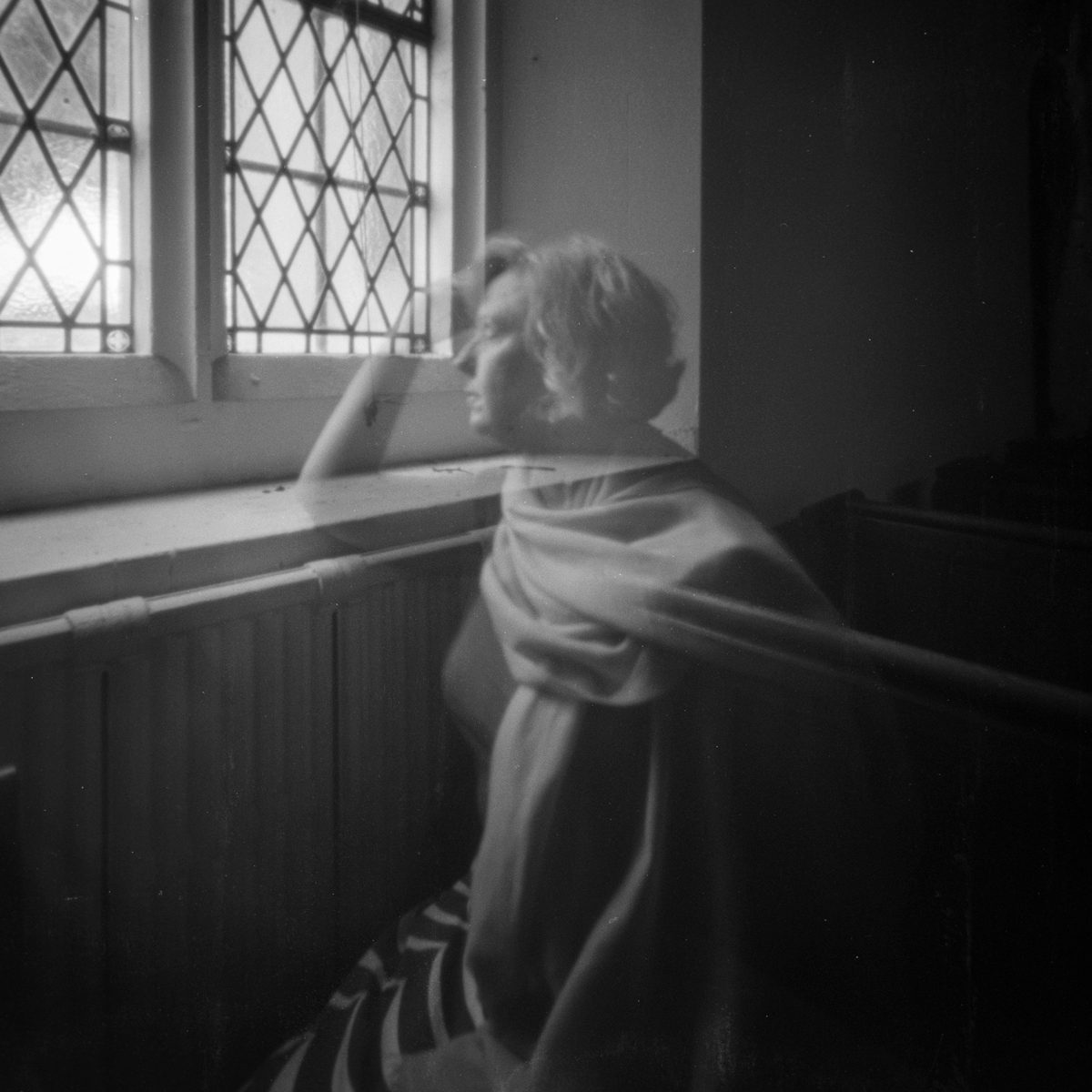
The ghost - ILFORD FP4+
Bringing pinhole to a wider audience
The act of taking photos with a pinhole camera elicits a wide range of reactions. My beautiful wooden cameras are a perpetual talking point and are often the starter for conversations with total strangers who are fascinated as to what I’m doing. Some already understand the principles of pinhole photography, often as a result of science lessons at school, while others are just plain curious. Security guards are regularly perplexed by my activities. I’ve lost count of the number of times I’ve seen one staring at me. I see their recognition of my tripod (often forbidden on private property), usually followed by confusion as to the nature of the wooden box which sits atop it. Is it a camera, or not? Almost always they decide against moving me on – I suspect for fear of looking foolish!
Ultimately I hope my photos speak for themselves and the process used to create them becomes secondary. If their dreamy, otherworldly look brings pleasure to others and myself I’ll happily continue my exploration of slow photography, bringing this ancient medium to a wider audience in the process.
About The Author

Helen Hooker
Helen Hooker is a musician and photographer based in the east of England. A switch to digital photography in 2004 reinvigorated a dormant interest in photography, providing an immersive hobby and a distraction from the demands of life as a busy professional musician. A ten year long 365 project followed and towards the end of this period Helen began exploring the possibilities of film photography once again.
Life on the road as a musician offers endless photographic opportunities and a camera of one type or another can always be found in Helen’s luggage. Helen is a photographic omnivore, but has a particular passion for architecture, a genre she regularly combines with her current obsession – pinhole photography. Over the last five years Helen has taken a deep dive into the pinhole world, exploring ways to get the most from one of the oldest photographic techniques. Pinhole images have gradually become the main focus of Helen’s photographic output and she shares photos from her travels with her wooden Ondu camera daily on Instagram.
Website
www.helenhookerphotography.co.uk






